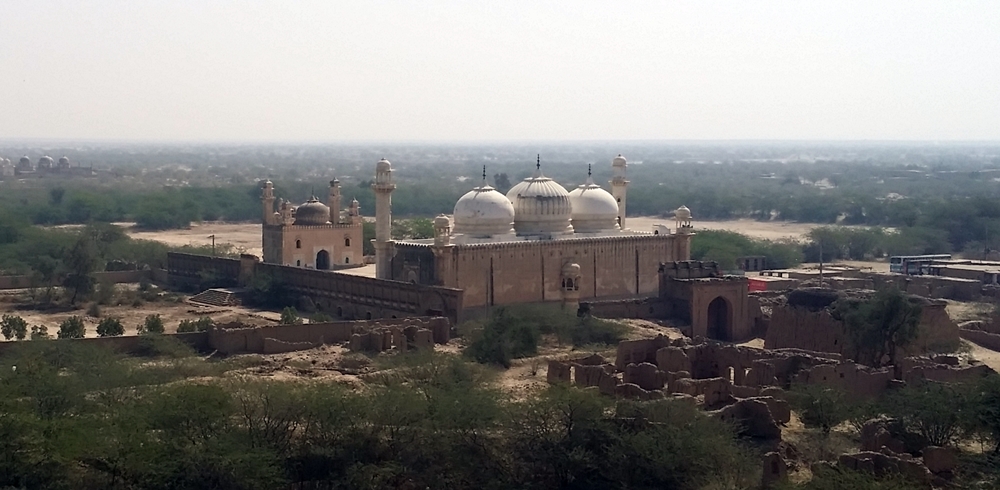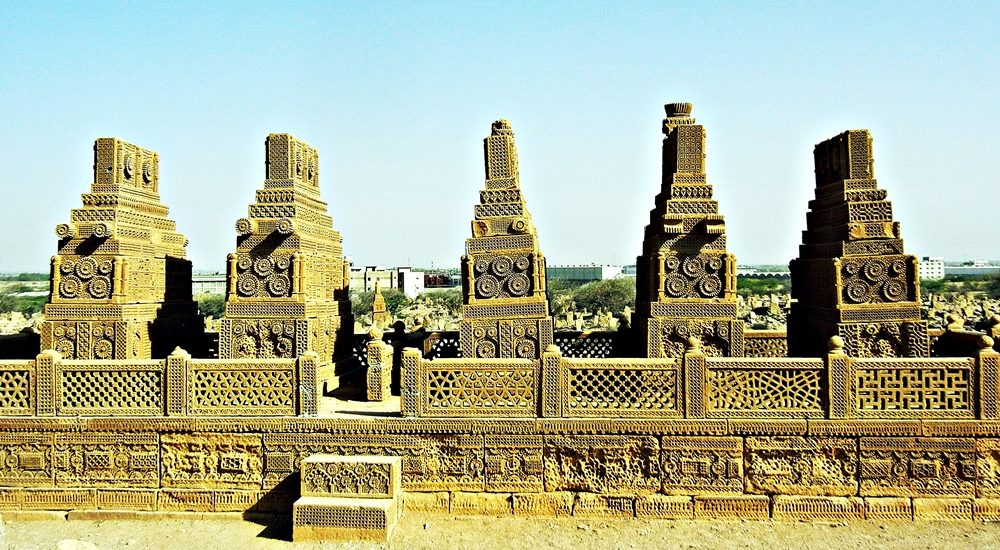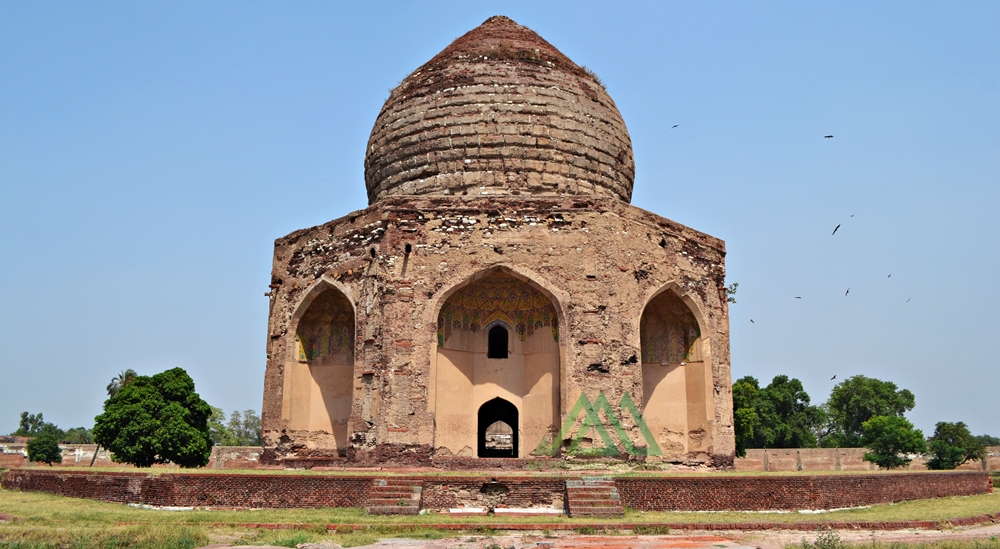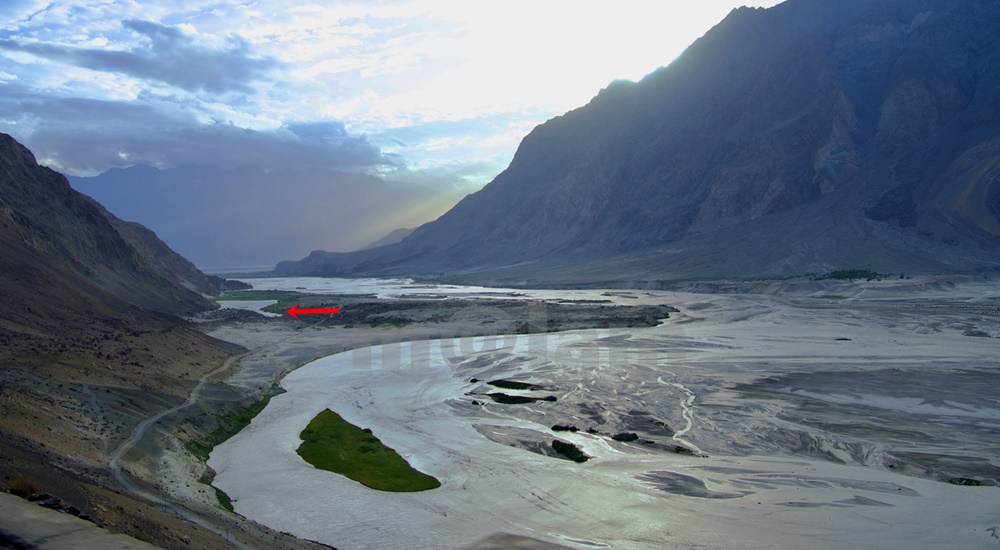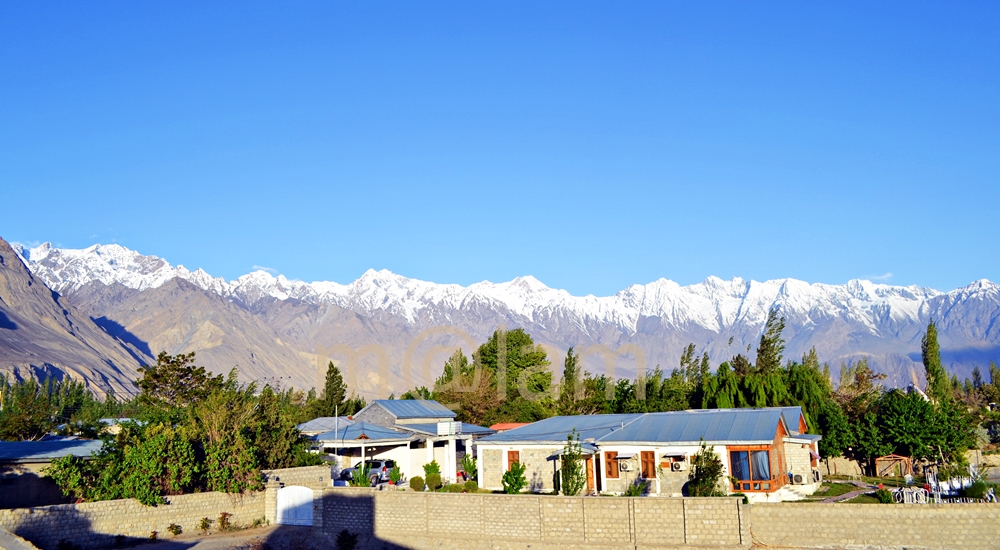Bahawalpur, the capital city of the Bahawalpur district situated in the southern part of the Punjab province in Pakistan, holds historical significance as it was once a princely state under the rule of the Abbassi Nawabs from 1748 to 1954. During their 200-year reign, the Nawabs contributed to the city’s grandeur by constructing some remarkable landmarks, leaving behind an architectural legacy that still defines the city.
As the 11th largest city in Pakistan and the 6th largest in Punjab province, Bahawalpur boasts well-preserved landmarks that serve as a testament to its rich history. The city is particularly attractive for visitors between October and February. While Bahawalpur has its own airport, travelers can also opt to fly into Multan and then drive to Bahawalpur. The city is accessible by air from major cities like Islamabad, Lahore, and Karachi, and by road from Karachi and Lahore as well.
Key highlights of Bahawalpur include:
Princely History: Bahawalpur served as a princely state under the Abbassi Nawabs for over two centuries, shaping the city’s cultural and historical identity.
Architectural Marvels: The Abbassi Nawabs left behind mesmerizing landmarks that stand as a testament to their rule. These architectural gems contribute to the city’s unique charm and are well-preserved to this day.
Ideal Visiting Season: The best time to visit Bahawalpur is between October and February, offering favorable weather conditions for exploration and sightseeing.
Access: Bahawalpur has its own airport, but travelers can also choose to fly to Multan and then drive to Bahawalpur. The city is well-connected by air and road, with flights from major cities and accessible road routes from Karachi and Lahore.
Overall, Bahawalpur is a city that invites visitors to explore its historical treasures, experience its cultural richness, and appreciate the architectural legacy left by the Abbassi Nawabs.
Darawar Fort

A must-visit attraction, Darawar Fort stands as a colossal citadel situated on the outskirts of the Cholistan Desert in Bahawalpur. Offering an exciting excursion from the city center, the fort is located approximately 95 km away, with a travel time of about 2 hours. The square-shaped fort’s immense size dominates the semi-desert landscape, easily visible from miles away. The fortified structure boasts 5-foot thick and 30-meter round bastioned walls, extending 1500 m in circumference, making it a robust and magnificent stronghold. While its exterior is particularly impressive, the interior may not match the grandeur witnessed from the outside.
Abbassi Mosque or the White Marble Mosque
The Abbasi Mosque, also known as the White Marble Mosque, is an elegant structure located in front of the Derawar Fort in Bahawalpur. Constructed in 1849 for the personal holy man of Nawab Bahawal Khan, Pir Ghulam Farid, this mosque is a striking representation of architectural beauty. Resembling the Moti Masjid at the Red Fort in Delhi, India, the Abbasi Mosque is entirely crafted from white marble, creating a pearl-like presence in the Cholistan Desert. The mosque features a spacious hall and courtyard, capable of accommodating up to 1000 worshippers simultaneously. Its tall minarets are visible from afar in the Cholistan desert, and despite the passage of time, the local residents have diligently maintained the mosque’s pristine condition.
Abbasi Royal Graveyard

The Abbasi Royal Graveyard, located in close proximity to the Abbasi Masjid in Derawar, serves as the final resting place for the Abbasi family. This sacred burial ground is under the ownership and control of the surviving family members of the Nawabs. The graveyard encompasses a covered area featuring a large rectangular room that serves as the resting place for 12 Nawabs who once governed the state of Bahawalpur. Additionally, the room contains the graves of Nawabs holding honorary titles after the amalgamation of Bahawalpur with Pakistan. Beyond the main rectangular room, other tombs belong to the immediate family of the Nawabs. These tombs showcase exceptional architectural craftsmanship and intricate artwork, including calligraphy, engravings, patchwork, and patterns. Visitors must obtain prior coordination and permission to explore this historic graveyard.
Cholistan desert
The Cholistan Desert, also referred to as Rohi, is a vast desert situated in Bahawalpur, Pakistan, covering an expansive area of approximately 26,000 square kilometers. Renowned for its distinctive ecosystem, this desert is a habitat for a diverse array of plants and animals. Beyond its ecological richness, the Cholistan Desert is steeped in historical significance, featuring numerous forts and tombs that trace their roots back to the ancient Indus Valley Civilization. The desert has become a favored destination for adventure tourism, offering activities such as desert safaris and camel treks, allowing visitors to immerse themselves in the unique landscapes and cultural heritage of the Cholistan region.
Lal Sohanra National Park
Established in 1972, Lal Sohanra National Park is a prominent conservation area among Pakistan’s 14 major national parks and protected regions, located approximately 50 km east of Bahawalpur. Recognized as a UNESCO-declared biosphere reserve, it stands as one of the largest national parks in South Asia. The park spans 127,480 acres, with 20,974 acres dedicated to green land (irrigated plantations), 101,726 acres to dry land (desert), and 4,780 acres to wetland (ponds and lakes). This sanctuary is home to a variety of wildlife, including the rare Chinkara Gazelle and abundant wild boar, while winter brings a multitude of ducks to the lakes. The park is intersected by the dry bed of the Hakra River, featuring the significant wetland of Patisar Lake. Accommodation options include a modest facility provided by the Pakistan Tourism Development Corporation (PTDC), and camping is also available in selected campsites within the park.
Sadiq Garh Palace

The grandeur and magnificence of Sadiq Garh Palace surpass even the enchanting palaces in Bahawalpur. Set amidst lush green lawns adorned with beautiful plants and flowers, and enclosed by a massive fortification, this sky-high structure features a central dome surrounded by bastions at each corner, showcasing the exquisite architectural taste of the Nawab’s family. The palace radiates an even more graceful aura at night, illuminated by a kaleidoscope of colored lights. The interior is adorned with top-quality furniture and embellishments. Established in 1882 by Nawab Sadiq Muhammad Khan (IV) and overseen by expert engineers, the palace required an investment of fifteen lac rupees and a decade to reach completion.
Darbar Mahal
Darbar Mahal, one of the many royal palaces in Bahawalpur, was commissioned by Nawab Bahawal Khan (V) in 1904. Originally named “Bahawal Garh,” the fort’s construction was completed in 1905 and was dedicated to one of the Nawab’s wives. This architectural marvel seamlessly combines local and foreign influences, incorporating elements from Mughal, Indian, Sikh, and European styles, resulting in a truly unique structure. The exterior is adorned in red with white accents, while the interior, painted in a light gold-tan color, exudes both strength and tranquility. Despite its captivating presence, access to the interior has been restricted since 1971, as the fort is now under the custody of the Pakistan Army. Nonetheless, the exterior offers an excellent view of this remarkable edifice.
Noor Mahal
Noor Mahal, the palace of the fifth ruler of the Abbasi family, Nawab Sir Muhammad Sadiq, is an imposing double-story Italian-style building constructed in 1885. Featuring 32 rooms and 14 basements, the palace was intended as the Nawab’s residence, although he never spent a night here. Instead, it served as the state guest house, hosting dignitaries and high-profile guests. Presently, the palace showcases family antiquities, exquisite furniture, and remarkable fixtures. Adorned with arms, muskets, and swords on its walls, Noor Mahal Palace reflects a rich historical ambiance. In 1999, the palace briefly functioned as an army club and remains under the possession of the Army. Protected by the Antiquities Act of 1975, Noor Mahal Palace stands as a testament to the region’s cultural and architectural heritage.
Gulzar Mahal
Constructed in 1902, Gulzar Mahal holds the distinction of being the first building in Bahawalpur to feature concealed electric wiring. Commissioned by Nawab Sadiq Muhammad Khan IV, this architectural gem exhibits a clear European influence, making it a noteworthy destination for visitors. The palace’s historical significance, coupled with its innovative use of concealed electric wiring for its time, adds to the charm of Gulzar Mahal as a unique and captivating place to explore in Bahawalpur.
Jamia Masjid Al Sadiq
Jamia Masjid Al-Sadiq stands as one of the largest mosques in Pakistan, constructed through the generous donation of personal property by Nawab Sadiq Khan Abbasi. Erected on a 12 ft elevated platform, the mosque’s foundation stone was laid over 200 years ago by the eminent Sufi, Hazrat Noor Muhammad Maharvi, who was both the spiritual leader of Nawab of Bahawalpur and a revered figure in the Chrishtia clan. With a capacity to accommodate 50 to 60 thousand worshippers simultaneously, the mosque is a stunning architectural marvel adorned with intricate marble work and notable engineering, especially in acoustics. In 1935, Sir Sadiq Muhammad Khan Abbasi V undertook its renovation. Positioned in the heart of the town’s main bazaar area, this beautiful mosque serves as Bahawalpur’s primary Friday mosque.
The Tomb of Bibi Jawindi in Uch Sharif

Uchh Sharif, an ancient town located approximately 50 km west of Bahawalpur, has a rich history dating back to Alexander the Great. Renowned for its ancient shrines and Sufi culture, one of the notable landmarks is the tomb of Bibi Jawindi, constructed in 1493 by Iranian prince Dilshad for Bibi Jawindi, the great-granddaughter of a renowned Sufi saint. The brick-built structure is adorned with a stunning blue glazed tile mosaic, and the turrets feature broad flowering leaves, setting it apart from Multani tombs. This three-story building includes an octagonal ground floor, a second story with a narrow gallery, and a hemispherical dome crowning the third and top floors. The wooden mihrab on the west wall reflects the typical pattern of Multani architecture, seen also in the tombs of Hazrat Rukn-e-Alam and Baha-ud-Din Zakria.
Bahawalpur Museum
Bahawalpur hosts a modest museum that showcases a diverse array of collections. The museum is divided into several sections, each featuring galleries with distinct artifacts. The Pakistan Movement Gallery boasts an impressive collection of photos, while the Islamic Art Gallery displays a wealth of arms, textiles, graphic arts, and metalware. The Archaeological Gallery houses relics from Moenjodaro and Harappa, and the Coins and Medals Gallery exhibits items from the former state of Bahawalpur. The Ethnological Gallery showcases handicrafts from Cholistan and Bahawalpur, while the Fabrics Gallery presents a variety of regional costumes. Additionally, the Manuscripts & Calligraphy Gallery features wood and stone carvings from both Islamic and pre-Islamic eras, along with camel silk paintings. Conveniently located less than 1 km southeast of Farid Gate, the museum offers visitors a rich cultural and historical experience.
Bahawalpur Central Library
Designed with Italian architectural influence, the Bahawalpur Central Library stands as the second largest library in Punjab, earning recognition as one of Pakistan’s finest libraries. Its foundation stone was ceremoniously laid on March 8, 1924, by Sir Rufus Daniel Isaacs, the Viceroy and Governor General of India at the time of the Nawab of Bahawalpur State’s coronation, Nawab Sir Sadiq Muhammad Khan Khamis Abbasi. Boasting an extensive collection, the library houses over 100,000 books and preserves all editions of major national newspapers since 1947. With a membership exceeding 12,000, the Bahawalpur Central Library is situated adjacent to the Bahawalpur Museum, offering a valuable resource for knowledge and research in the region.
Bahawalpur Zoo
Bahawalpur Zoo, situated in the heart of Bahawalpur City, is a notable attraction known for its diverse collection of wildlife. The zoo provides a captivating experience for visitors, featuring a range of animals from different species. With spacious enclosures, the zoo aims to offer a comfortable and natural habitat for its inhabitants. Visitors can explore various sections dedicated to mammals, birds, and reptiles, gaining insights into the rich biodiversity of the region. Bahawalpur Zoo serves as a recreational destination for families and wildlife enthusiasts, providing an opportunity to appreciate and learn about the fascinating world of animals. As a popular spot in the city, the zoo contributes to both education and entertainment, making it a significant part of Bahawalpur’s cultural and leisure offerings.
Farid Gate
Farid Gate, one of the seven gates of the ancient walled city, is a historic landmark that holds cultural and architectural significance. This gate is named after the revered Sufi saint, Hazrat Bahawal Haq, commonly known as Hazrat Fariduddin Masood Ganjshakar, whose shrine is situated in the city. Farid Gate serves as one of the entry points to the old city and is an emblem of the region’s cultural heritage. The gate is adorned with traditional architectural elements, reflecting the historical and artistic influences of the area. As visitors pass through Farid Gate, they are not only entering the city but also stepping into a space infused with the spirit of Bahawalpur’s past and the teachings of Hazrat Fariduddin Masood Ganjshakar.
Sadiq Public School
Sadiq Dane High School, situated in Bahawalpur, Pakistan, holds a legacy dating back to its establishment in 1885, making it one of the oldest educational institutions in the region. Renowned for its commitment to academic excellence, the school offers education spanning from primary to higher secondary levels. Beyond its educational offerings, Sadiq Dane High School is celebrated for its rich history and noteworthy contributions to the field of education. Over the years, it has played a significant role in shaping the educational landscape in Bahawalpur and stands as a testament to its enduring commitment to learning and knowledge dissemination.
Panjnad Head
Panjnad Head, located 12 kilometers from Uch Sharif, is a significant geographical point where the five rivers of Punjab converge. This spot marks the meeting point of these rivers, offering a picturesque and scenic environment, making it an ideal destination for picnics. The beauty of Panjnad Head lies in the convergence of these rivers, creating a serene and tranquil setting for visitors to enjoy.





